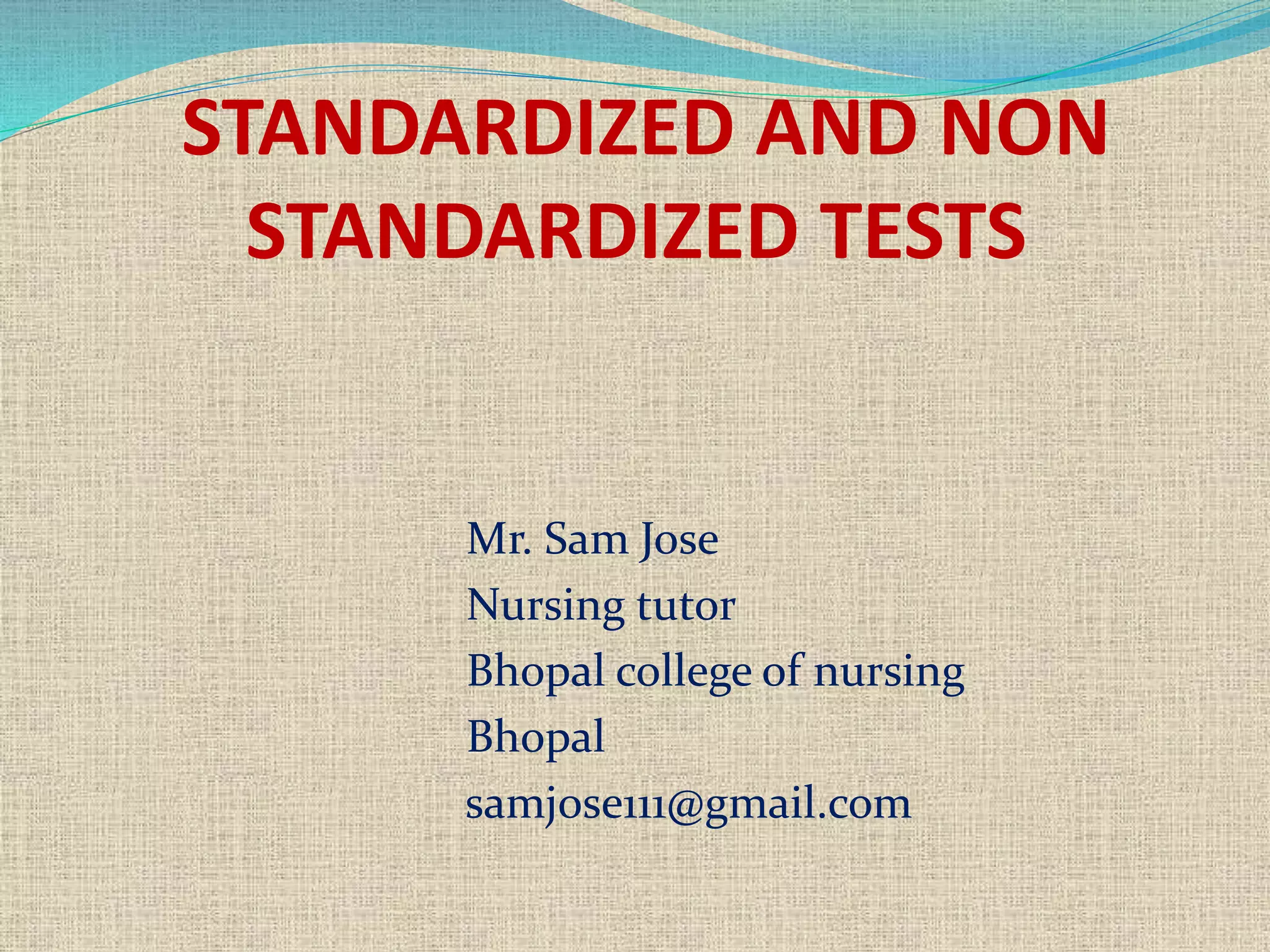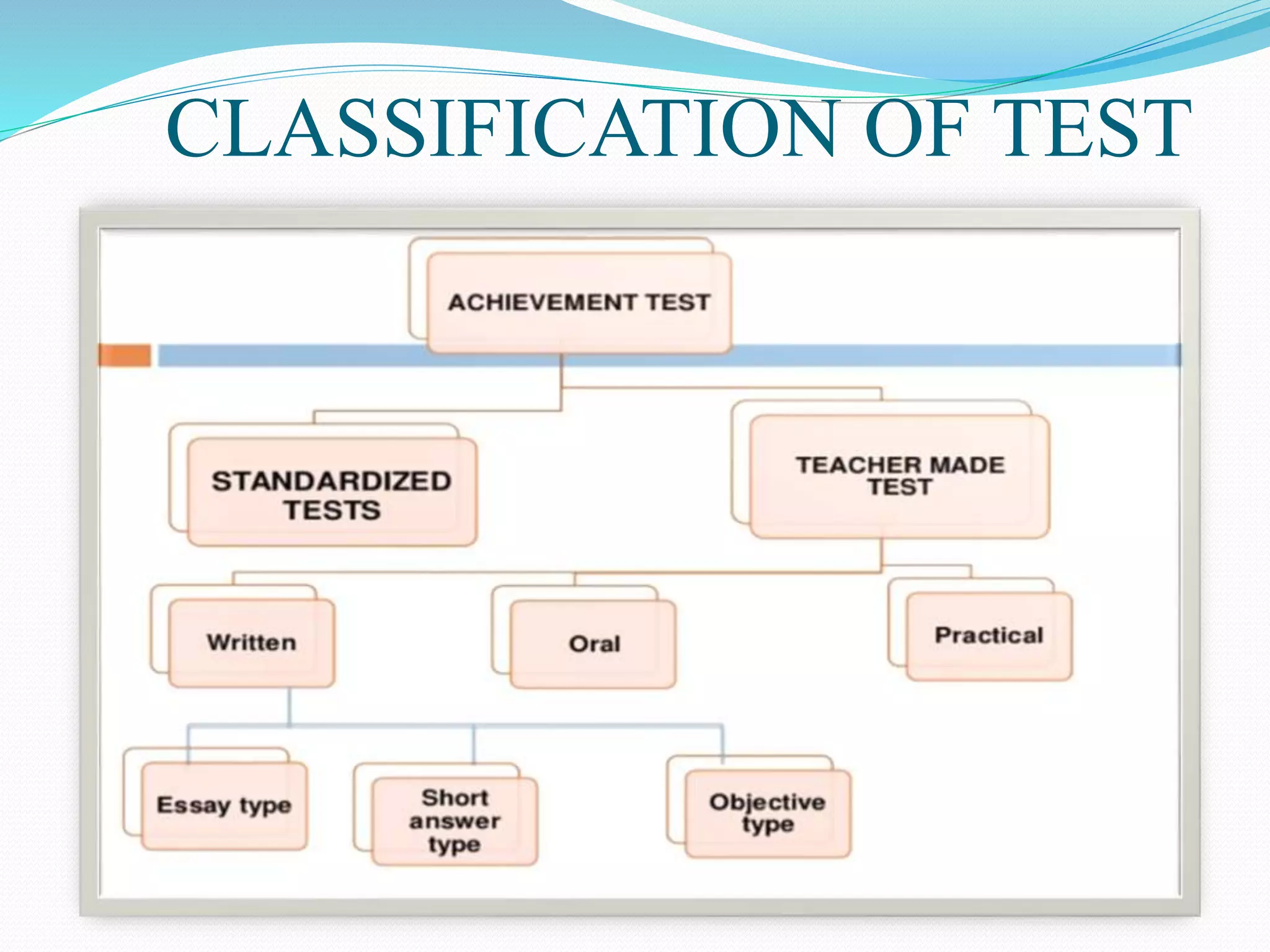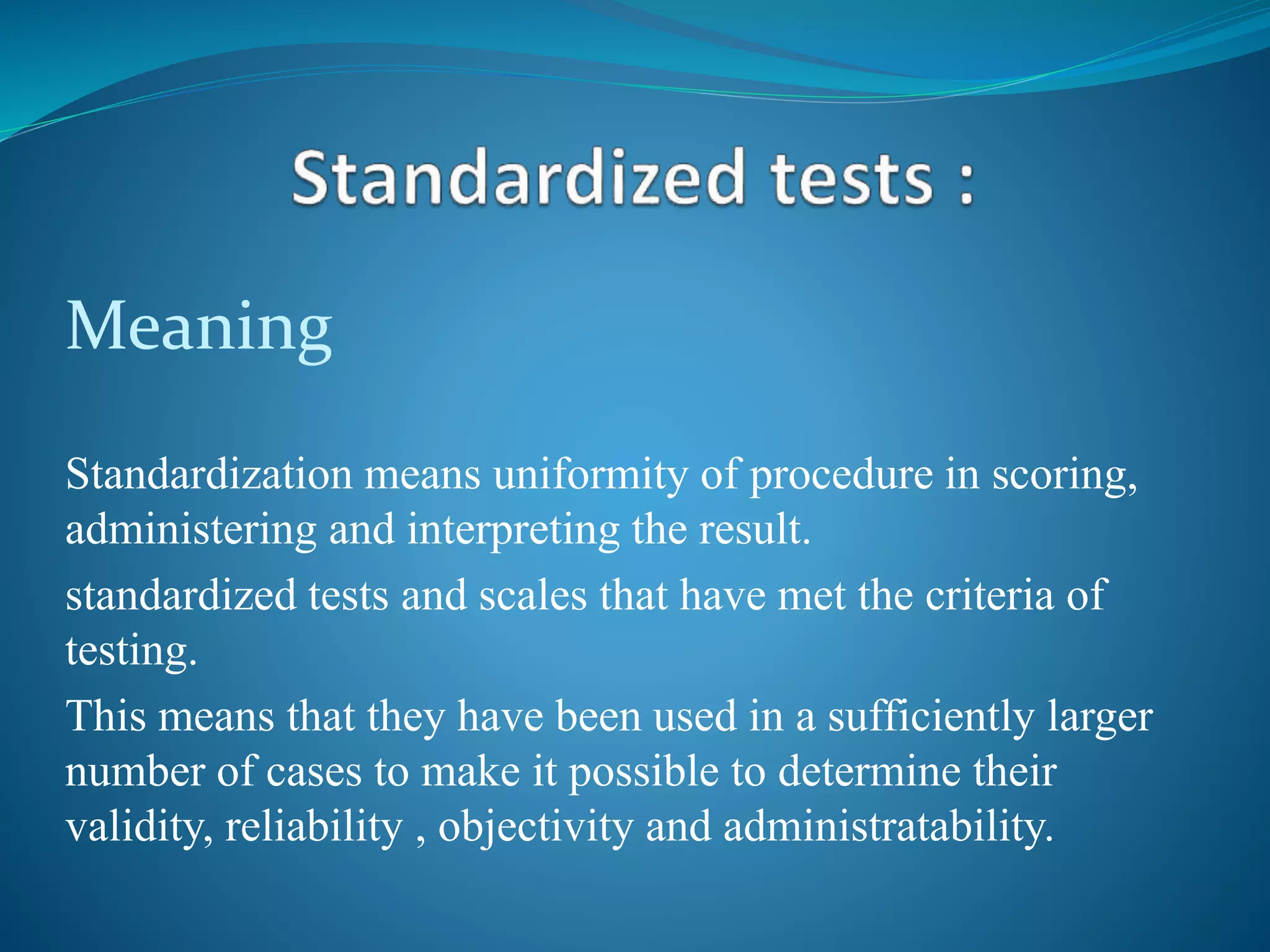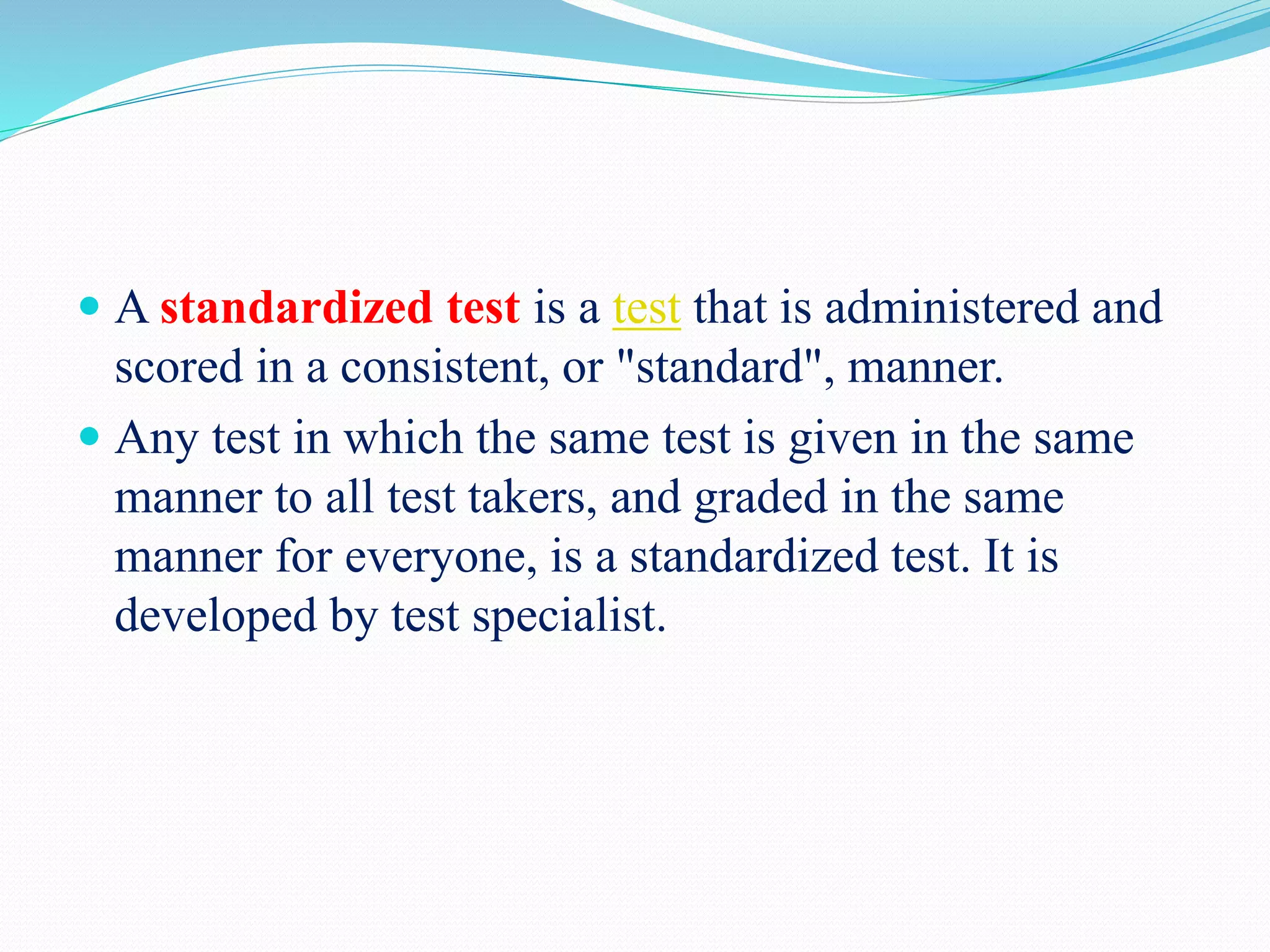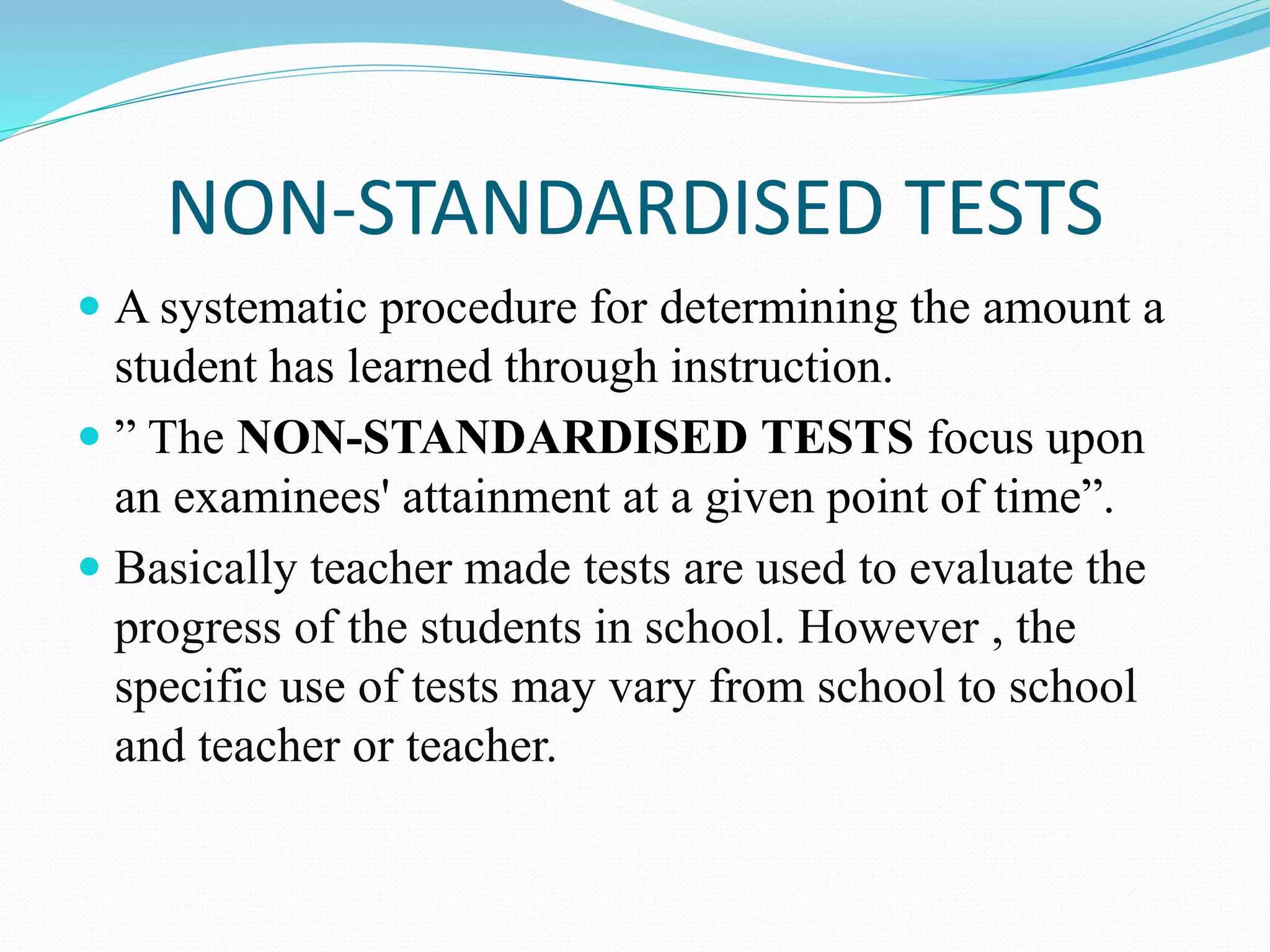This document discusses standardized and non-standardized tests. Standardized tests are administered and scored in a consistent manner to all test takers. They are developed by test specialists and allow for comparison of performance between individuals. Non-standardized tests focus on a student's attainment at a point in time and are often teacher-made. The document outlines key characteristics of good tests such as reliability, validity, cost, time, acceptability, objectivity, and usability. It also discusses norms, which provide a standard of comparison for test results.
